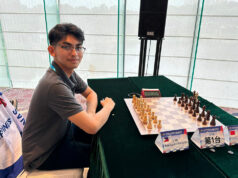If there’s anything Maria Sharapova has shown so far through her comeback in the United States Open, it’s that determination fuels her competitiveness. For all her talent, she thrives on purpose, and she is willing to do all she can in order to meet it. It would have been hard enough for her to try to make her way back to the top after having been sidelined from major tennis for 19 months. To seek redemption with hardly any peers on her side makes her effort doubly difficult.

Truth to tell, Sharapova doesn’t need the aggravation. If she retired now, at 30, she will already have proven herself to be among the sport’s all-time greats: She became World Number One in her teens, she boasts of five majors, and, with it, a career Grand Slam, and she would most certainly have a longer resume had she not found herself toiling in the Serena Williams Era. And she isn’t in it for the money or fame: She’s the highest-paid female athlete in the world, and only those who have lived under a rock in the last decade or so will not recognize her mug and the figure she cuts in myriad media productions.
Yet, it’s precisely because Sharapova resolves to keep wielding her racket until she has absolutely nothing left to give that separates her from the rest. It’s clearly why fans love her despite her supposedly stained past. Not everyone gets another crack after having been banned for doping, but there she is, in Williams’ absence the organizers’ biggest draw at Flushing Meadows.
Admittedly, the optics aren’t kind to Grand Slam tennis. It’s why fifth-seed Caroline Wozniacki couldn’t help but complain in the aftermath of a loss on Court no. 17. Then again, it’s not Sharapova’s fault that many more paying spectators want to watch her, and that the only way to serve the increased interest would be to place her at the imposing Arthur Ashe Stadium, never mind her World Number 146 ranking and status as a wild-card entry. As she herself said, “I’m a pretty big competitor. If you put on out on the parking lot of Queens, in New York City, I’m happy to play there.” And, in a deliberately biting tone that demonstrates her feistiness, she added, “That’s not what matters to me. All that matters is I’m in the fourth round. I’m not sure where she is.”
Whether Sharapova will succeed in surviving the entire fortnight remains to be seen. At this point, her body is already complaining from all the stress it has been subjected to after a long period of inactivity. And she won’t have many — if at all — sympathetic voices inside the locker room. Then again, her position isn’t new to her; she has long been prepping for matches alone in front of her stall, lost in her own world. And then when she steps on the court, she let’s it all out. Amid the din of the support and opposition she is greeted with, she is at peace.
Anthony L. Cuaycong has been writing Courtside since BusinessWorld introduced a Sports section in 1994. He is the Senior Vice-President and General Manager of Basic Energy Corp.



